The Evidence supernovae on the Sun, Earth and Planets
Introduction
This is the main study on climate change and on the events that are influencing the entire solar system. The study began in 2016/17 with the publication of several videos on YouTube. Due to lack of time and resources I was forced to stop publishing subsequent videos on Youtube but I continued to research for years, until today.
Now it's time to publish everything. I'll start with the website, which will act as a reference for everything. On the site I can detail the calculations, references and tables. Things that obviously cannot be done on a video. I titled this page, as well as the videos published on YouTube “the Evidence” because based on everything you read you will be able to see for yourself the evidence of what is happening and what will most likely happen .
The causes of climate change and future events
For decades, more and more natural disasters have occurred and the temperature on earth is rising. There is still no exhaustive explanation of what is happening. Hundreds if not thousands of studies have been published but unfortunately it is not possible to clearly understand what the cause is. Some say it is caused by (anthropic) man (Wikipedia, United Nations), while others say it is a recurring natural cause. Furthermore, “ideological” prejudices are completely undermining what should be a very important scientific study to help humanity.
What I discovered goes beyond all the studies done to date, it is something new and in addition to revealing the true cause of climate change, it will also explain the times we are living in, which, as each of you knows, they are very particular. To continue you need to have a minimum knowledge of astronomy. Follow me because there are lots of news!
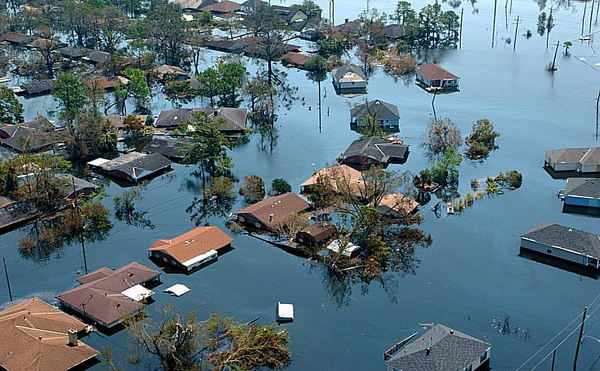
Are natural disasters caused by man or by some phenomenon unknown to us? Can man influence the forces of nature?
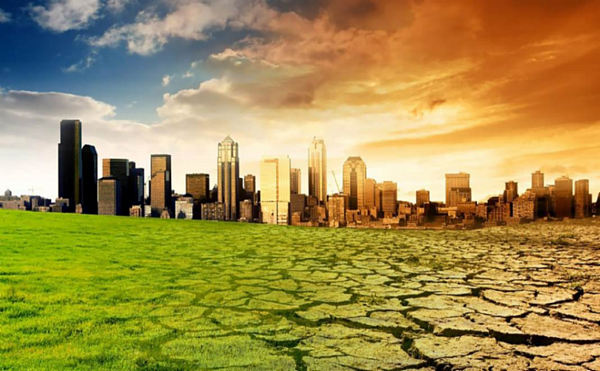
The earth and all the planets of the Solar System have been “warming” for many years.
The effects of supernovae on the solar system
To understand the causes of global warming we must start from afar, only in this way can we have answers. Let's start immediately with space, our solar system and our galaxy the Milky Way. I have prepared a graph of all the supernovae (I will often use SN from now on) that have exploded in our galaxy since the year 100 AD. to date.
There have been 7 bright SNs (yellow) and in addition there are also 4 'remnants' (Supernova Remnant) in blue which indicate other explosions but which have not been seen. There is also an SN outside the Milky Way (Red). 11 have occurred in our galaxy. Plus one in the Large Magellanic Cloud which occurred in February 1987.
A – The effects of supers Starting from about 2000 years ago until today, 7 supernovae visible to the naked eye have occurred, 3 “remnants” and a supernova in the Magellanic cloud. From the graph we can see that no bright supernova has exploded anywhere in the solar system for a long time.
We can therefore conclude that in our galaxy, over 2000 years, there have been 7 very bright SNs and perhaps even triple the number of SNs not seen due to the lack of telescopes. Including 'remnants', scientists have calculated that around 3-4 supernovae occur in our galaxy every 100 years. Based on the graph we can understand that it has been a long time, 400 years, since a bright supernova exploded.
So there is a high probability that one of these could explode very soon in our galaxy (the Milky Way). “Remnant” supernovae are gaseous clouds in space that often contain a star called pulsars. Based on their expansion speed, astronomers calculate the date on which the supernova occurred.
The solar cycle over the years
The graph below shows the “Sunspots” from around the year 1600 to today. The minimum corresponds to the “cold” period on earth. Note the two known minimums: the Maunder minimum and the Dalton minimum. The Maunder Minimum corresponds to a period during which one could skate on the Thames in London. This was for about 30 years. We see that solar irradiance is directly proportional to the period of each solar cycle. The longer the period, the less solar radiation will be.
The graph at the top left indicates that, in the minimum solar periods, the duration of the solar cycle also increases. The average solar cycle is 11 years and we see that during the Maunder Minimum it increased to a maximum of 22 years. In fact, solar irradiance has increased continuously since the beginning of 1900. I would like to point out that this is the composite solar irradiance. This “detail” is very important because we will see it later and see what the causes are.
Now let’s try to join the two graphs.
The one about supernovae, and that
of sunspots.
Relationship between Supernovae and Sunspots and Solar Cycle
We see from the graph, how the solar “minimum” periods “adapt” to supernova explosions. In the sense that, after the Supernova explosion, on Earth there are periods of solar “minimum” with a consequent cooling of the Earth. We also note that the last solar minimum was due to a supernova (SN1987A) that exploded at 168,000 light years.
When I found out, I thought it couldn't be true, because the distances are enormous. But I did the appropriate calculations and it seems that the energy of the supernova is able to reach us: even from very far away. Please note that these topics will be covered in detail (I will publish them in a few months) in the relevant sections found in the footer, obviously certain technical “things” cannot be of interest and easy to understand for everyone. Note how the closest supernovae have produced long-lasting periods of absence or decrease in solar activity. Let's now try to make comparisons with volcanoes too.
C -Periods of solar minimum correspond with supernova explosions. We also see that closer supernovae have caused periods of intense cold on Earth.
Relationship between supernovae and volcanic eruptions
All dates of volcanic explosions coincide with supernova explosions.
Observe the GAP between the supernova and the volcano eruption and then the temperature changes on the sun and earth. It should be noted that probably the supernova SN1987A, which exploded at a distance of 168,000 light years (I have recalculated it is closer, explained in the next pages) was so powerful that it caused the volcanic explosion of Mount Pinatubo.
Obviously the volcano produces ash which is dispersed in the atmosphere and blocks the sun's rays and consequently the earth cools, but it also cools because the cosmic radiation from the supernova also acts on the Sun, decreasing its activity. It should be noted that most volcanic explosions occurred during solar minimum periods. Cosmic rays during solar minimum can reach the earth with greater force. The volcano is triggered almost immediately upon the arrival of cosmic rays. Let's now look at the relationship with earthquakes.
D – After each supernova explosion, large volcanic eruptions have always occurred. Notice the red lines that go down to show how the Sun was also affected by decreasing its irradiance.
Relationship between supernovae and earthquakes
Earthquakes also coincide with supernova explosions albeit to a lesser extent. Following the red curves we see how the evolution of earthquakes has always followed the supernova one. The earthquakes that occurred in Chile in 1960 and 1964, which are also the most powerful, remain a great mystery. From a little research I discovered that in 1967 a military satellite noticed explosive radiation coming from the Galaxy but it didn't correspond to the year.
It should be noted that these earthquakes correspond to the largest known solar cycle but the cause is not yet well understood. For now it is enough for me to see that all 6 supernovae match the data on the chart. The dispersion of earthquakes indicates that they are most affected by particles with lower speed and energy.
Also, according to the correspondence, I think earthquakes (not all) are “underground volcanoes”. The explanation for the increase in earthquakes is shown on the next slide.
E – Supernovas have also caused many earthquakes. At this point everything coincides even though there is still a lot to study about earthquakes. Earthquakes are “underground volcanoes”.
Summary and first conclusion
We have seen how, by going back to historical data, we have been able to create graphs of both supernovae and solar activity and how these match 100%. The same thing applies to the effects on the earth. Volcanic activity increases considerably immediately after star explosions. It does not increase immediately, that is, when the star's light reaches us, but increases after a certain number of years.
In the next few months I will publish all the topics and calculations including the calculation of the energy of a supernova reaching the Solar System and the Earth. So at this point we have the first evidence: supernovae affect the solar system. We can summarize like this:
– Supernovae affect the solar cycle. Increasing the normal 11-year cycle to double it
– Supernovae affect solar radiation by decreasing the amount of energy that our Sun normally emits.
– Supernovae influence the volcanic and tectonic activities of all the planets in the solar system by increasing them.
At this point, in order not to make the web page too heavy to read, we can move on to explanations of how these things can happen. You can access by clicking on the button below.
References
- Cause del cambiamento climatico


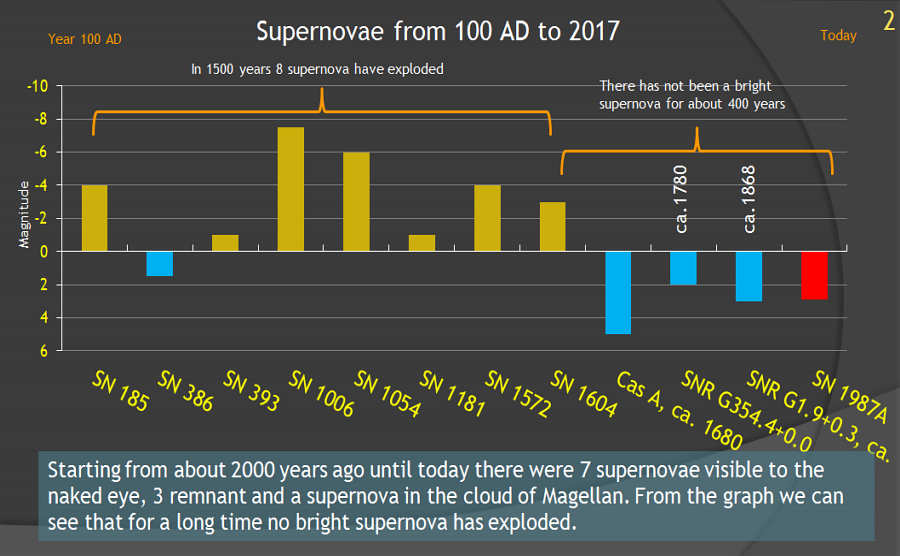
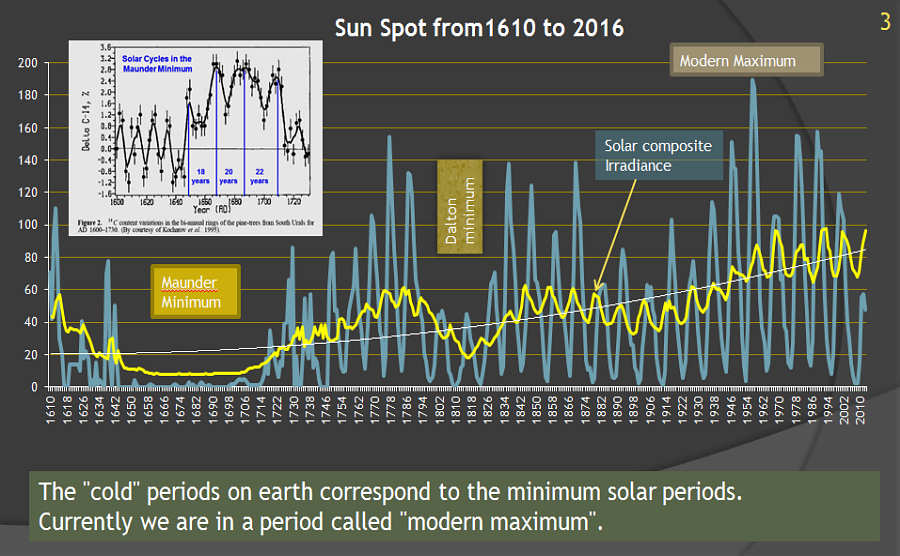
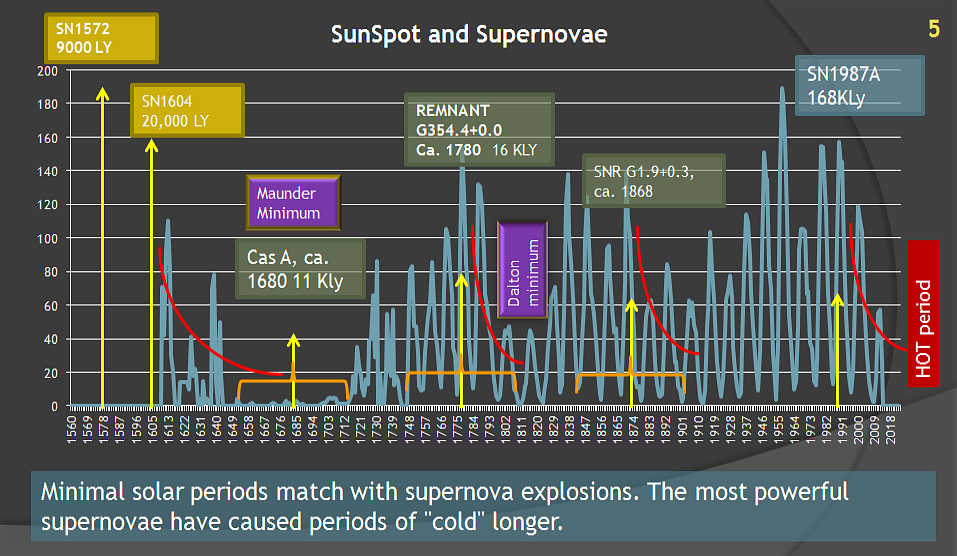
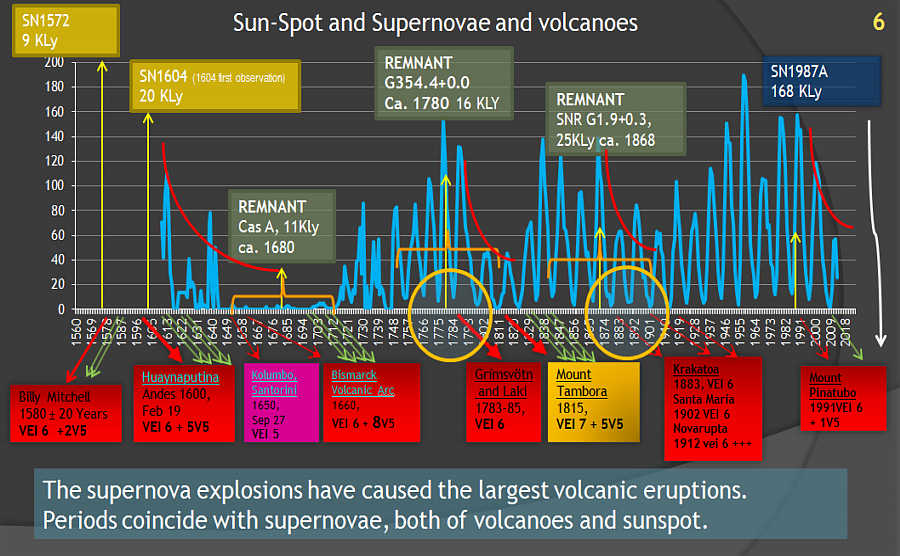
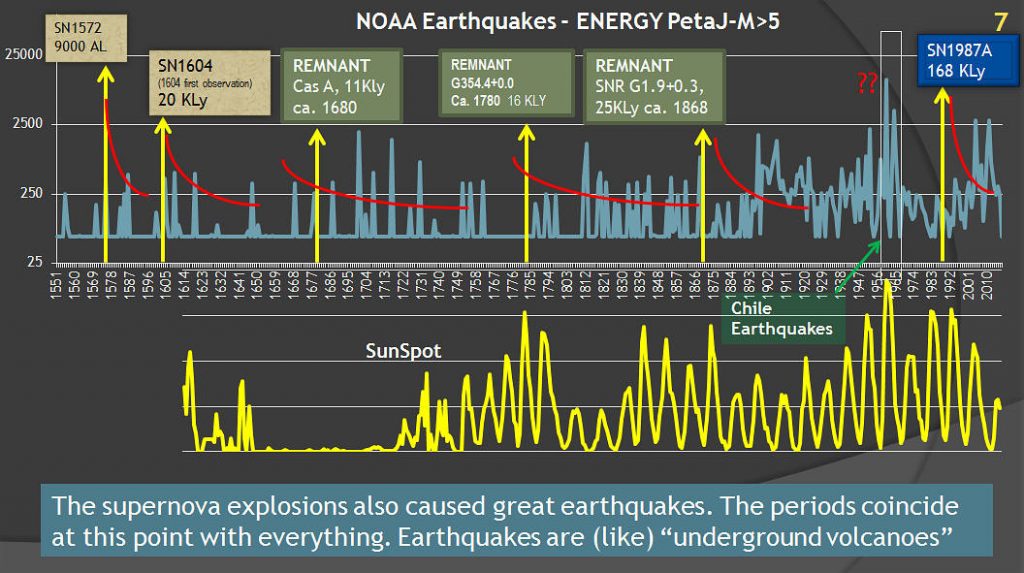
Leave a Reply